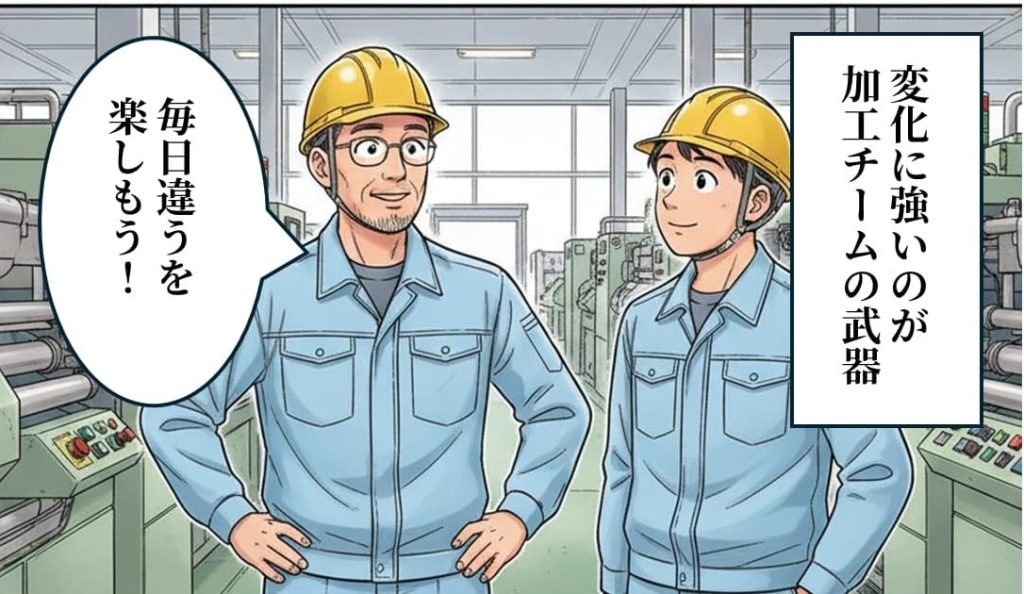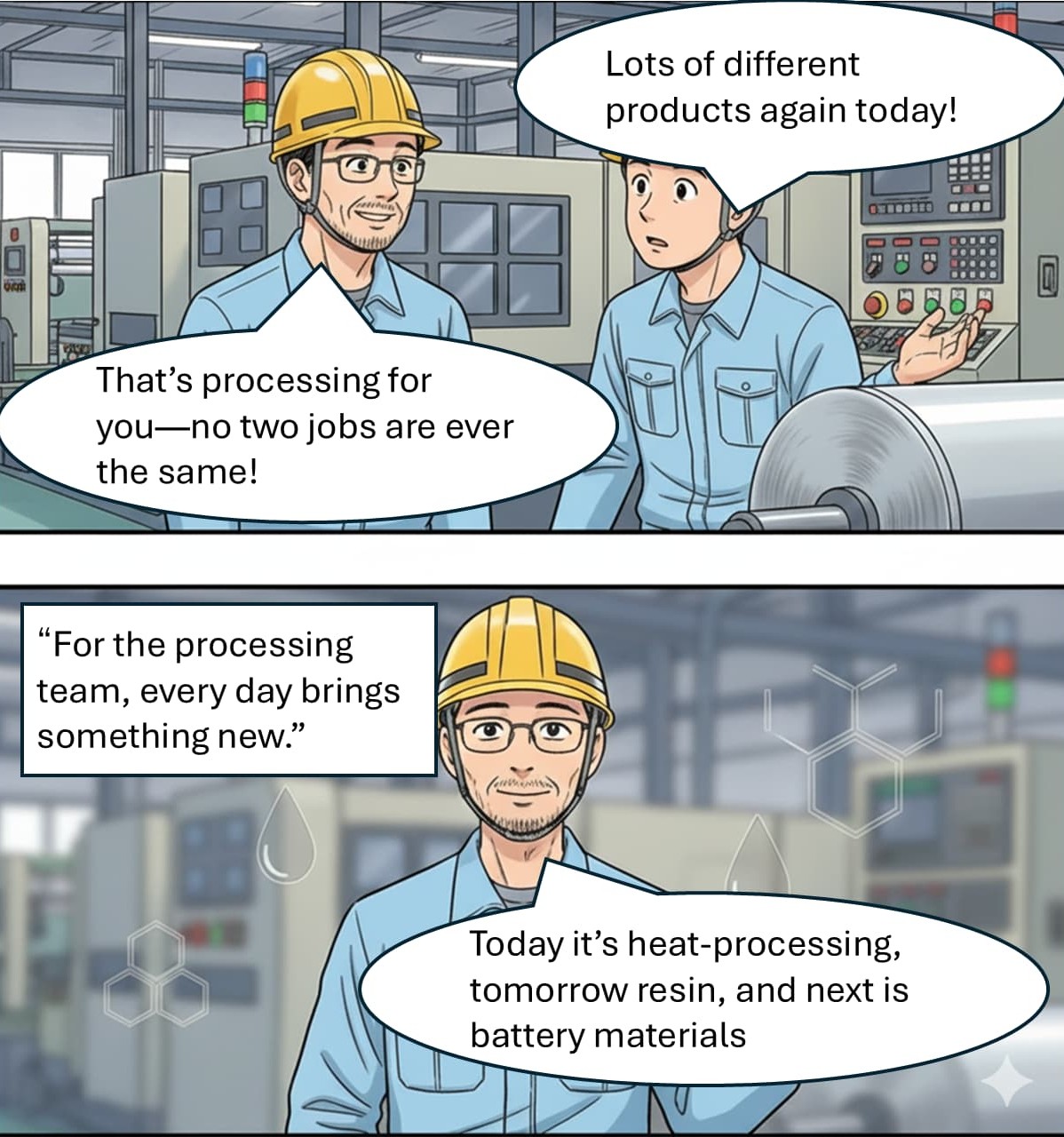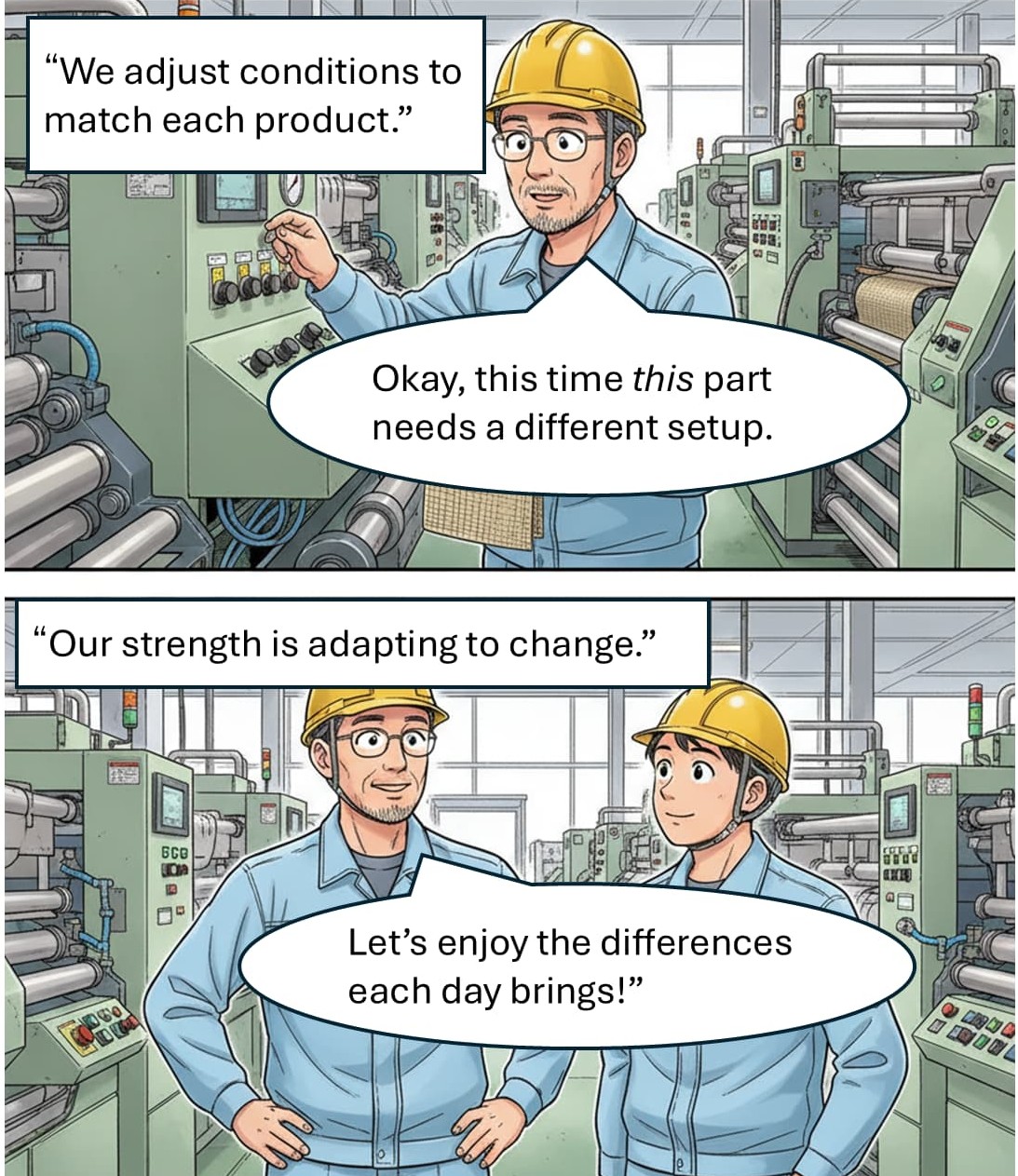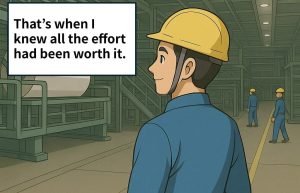”4panel-comic”Production-sites-ability-to-adjust
The capability of the shop floor to meet ever-changing demands

In manufacturing, the conditions required change depending on the product being handled. Even with the same material, characteristics can vary from lot to lot, and adjustments may be needed depending on the state of the equipment or the surrounding environment. To respond to these daily changes, it is essential to accurately understand the situation and assemble the necessary conditions through appropriate procedures.
Work styles today are rapidly evolving, not just in manufacturing. The introduction of new technologies is common, and the roles and responsibilities expected of workers gradually shift over time. The ability to adapt to change is becoming a theme that is increasingly sought after across many workplaces.
So, how can this adaptability be developed? It does not require any special talent or reliance on individual judgment. By organizing information, considering conditions, and repeatedly recording and improving in daily work, one builds the foundation for responding to change as a “system.” The more experience one gains facing situations that do not go as planned, the more calmly one can handle future changes.
Adaptability to change is not something that rests solely on individuals. The stronger the organizational foundation—shared knowledge within the team, accumulated data, and standardized procedures—the more smoothly the organization can move without being thrown off by change. A system based on “shared criteria” rather than “someone’s intuition” is what empowers a team to handle dynamic environments.
In an era of continuous change, we are constantly faced with many decisions. Whether we perceive these as burdens or as opportunities to strengthen the organization significantly affects the quality of our work. Even small changes encountered today may be the first step in preparing for larger changes tomorrow.








